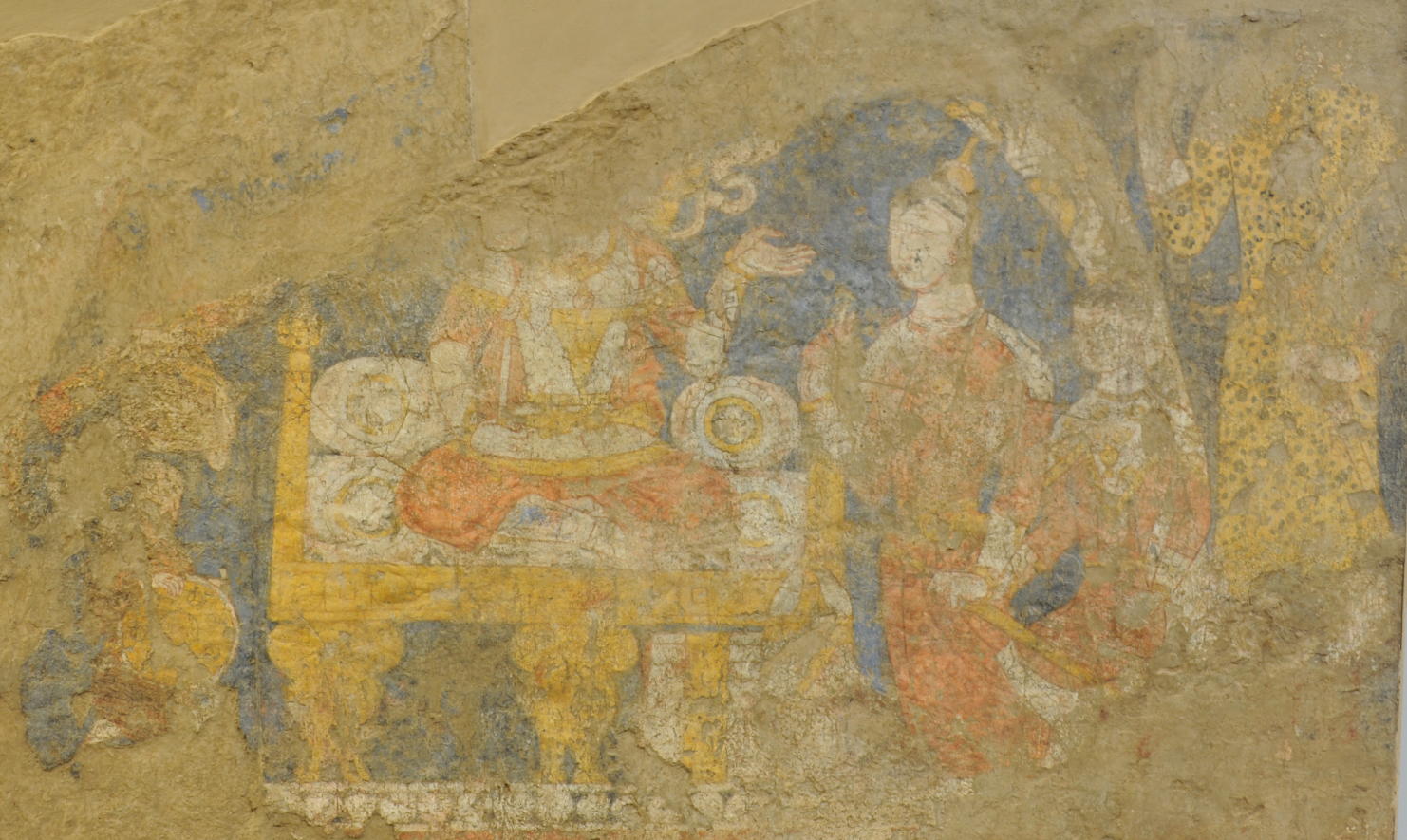
Create an Amazon Wedding Registry
Throne Scene, Rustam Cycle, Sector XXIII, room 50, Piandjikent



Painting with glue paints on dry loess plaster
Penjikent. Sector XXIII, room 50, eastern wall
Source: “Rustam Epics 2 from Room 50,” Telling the Sogdian Story: A Freer|Sackler Digital Exhibition Project, accessed December 9, 2020
In addition to the Rustam Cycle in the Blue Hall, the hero Rustam appears in other epics of Penjikent (Ciafaloni and Della Rocca de Candal 2011,117). This particular panel is found in Room 50 of Sector XXIII which contains some of the most ‘legible’ of the Penjikent paintings. The murals of the room are believed to have been painted around 740 of the common era. This section is the eighth and final panel of this epic.
In the episodes preceding this scene, a horseback warrior is following a beautiful girl, who is also on horseback. However, the girl’s horse is being lead by a powerful three-headed demon. The warrior duels the demon on horseback before eventually wrestling the demon. The warrior defeats the demon and reports to Rustam. There is a march of warriors before the warrior and girl approach the king’s court.
This panel is the scene at the king’s court. The king is seated on a gold throne decorated with elephants as structural supports. This king is believed to be Kay-Kavus or Kay Khosrow who were rulers of Rustem in the Shah-nameh. Men and women attending to the court are on either side of the throne, including the warrior and the girl, who are kneeling before the king. Rustam in his leopard-print coat is shown speaking to the king near the warrior and girl who are holding the scabbard of the warrior’s sword. The warrior has placed his trophies, the demon’s armor and helmet, before the king. Seated to the king’s right, there are two figures who appear to be musicians, storytellers, or bards to the king and his court.
Scholars have interpreted this scene to show Rustam giving the girl, who is presumed to be his daughter, in marriage to the warrior hero who rescued her from the demon. The warrior and the girl are holding the sword together and swearing to remain faithful to each other. On the face of the hero on this last panel, there appears to be a word written by a visitor which is believed to be the name of the hero. However, this inscription is barely visible. Although in Iranian tradition there is a separate epic Banu-Gushasp-nameh where there is a marriage of one of Rustam’s two daughters, scholars do not believe this is the same tale because the inscription does not seem to be the same name as the husband and the plots differ.
Source: “Ruler Enthroned,” Telling the Sogdian Story: A Freer|Sackler Digital Exhibition Project, accessed December 9, 2020